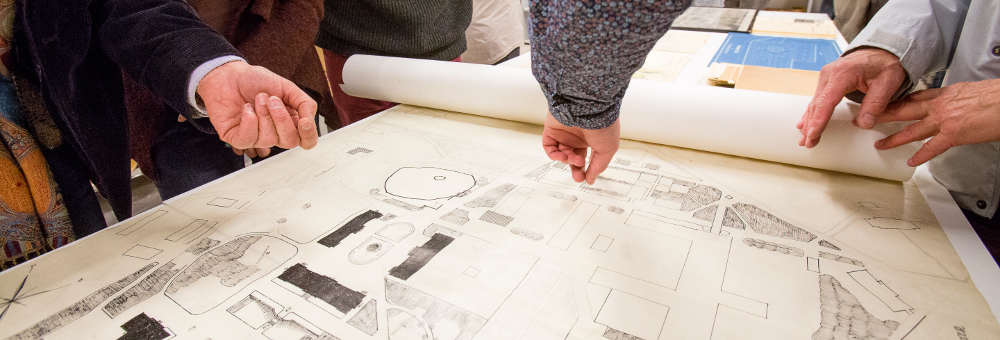The Historical Archive of Norwegian Landscape architecture, affiliated to the Department of Landscape Architecture at NMBU, is situated 35 km southeast of Oslo in Southern Norway. Some people may wonder if the Archive contains projects from the far North, since they may assume that the collections, which were mainly works by teachers and students at NMBU, were located in the Southern regions no further than Trondheim.
In fact, the collections (from 1919 till today) show that the works by professors and garden and landscape architects at NMBU were from the entire country, including the northernmost regions. The first student works with cases of Northern Norway appeared in the late 1950s, but using northern Norway as a teaching topic started earlier than that. This article presents some of the northernmost projects found in the Archive.
In Norwegian the term Nord-Norge (Northern Norway) includes two counties (fylke): Nordland and Troms-and-Finnmark, covering 1/3 of the total land of Norway. Cities such as Tromsø, Bodø, Mo i Rana, and Vadsø are located here. The climate differences are significant between the North and the South of Norway, so are among different areas of the North. The region inhabits also a large population of the indigenous Sami people (Wikipedia).
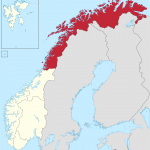
Northern Norway with the counties Nordland, Troms and Finnmark.
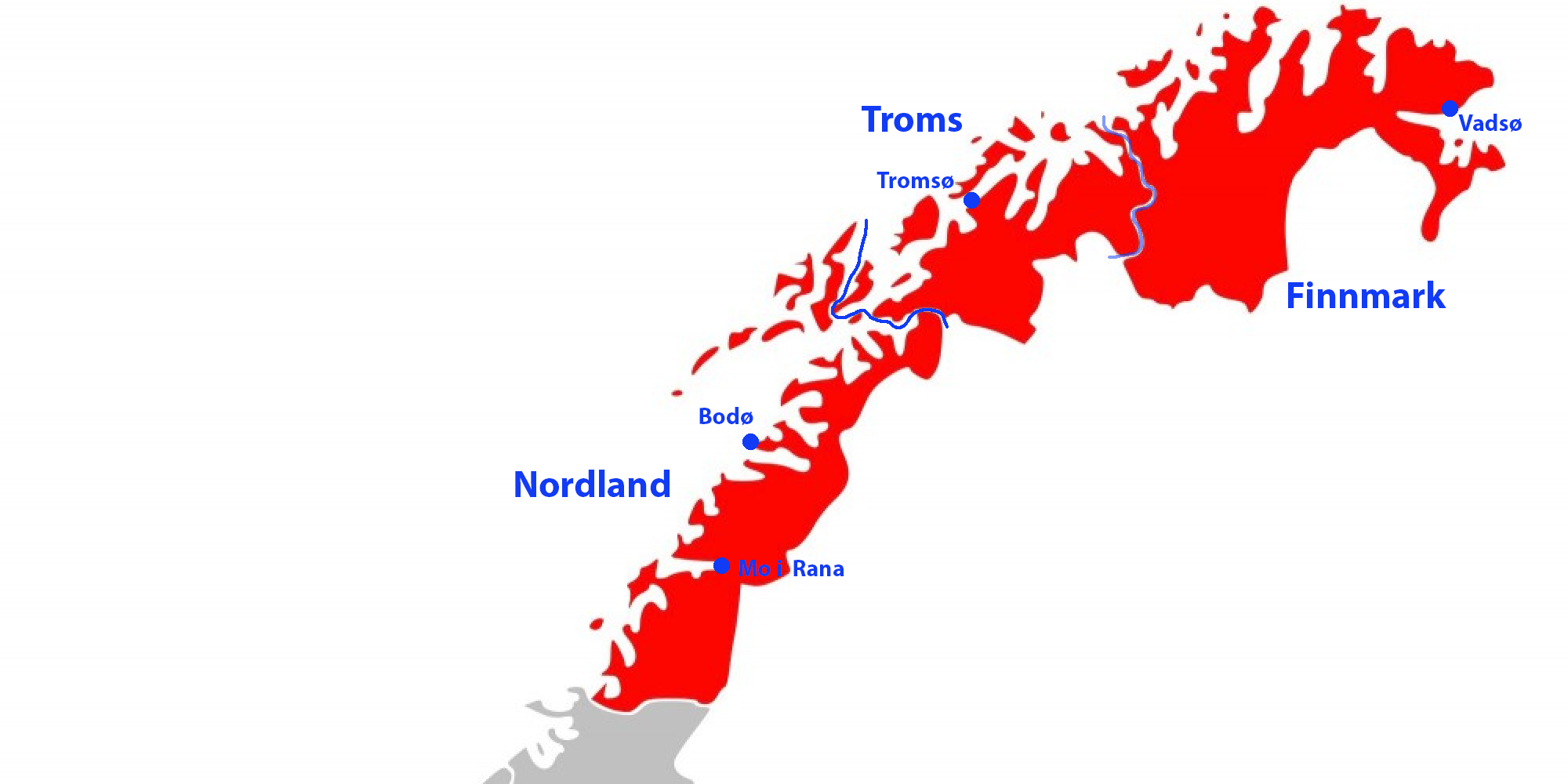
The historical perspective – Northern gardens and parks from the past
A great source of materials on Northern Norway is from the collection of Historical Parks and Gardens, a register of valuable historic parks and gardens conducted by Professor Egil Gabrielsen (1933-1998) and professor Magne Bruun (1932-2018) in the late 1950s and 1960s. Although they focused on the southern part of Norway, they also included gardens and parks from Nordland. For example, gardens of the former trade stations along the coast were documented, including Grøtøy in Leiranger, Husby in Dønnes or Kjerringøy, Kobberdal, Lurøy, Røsvik and others.
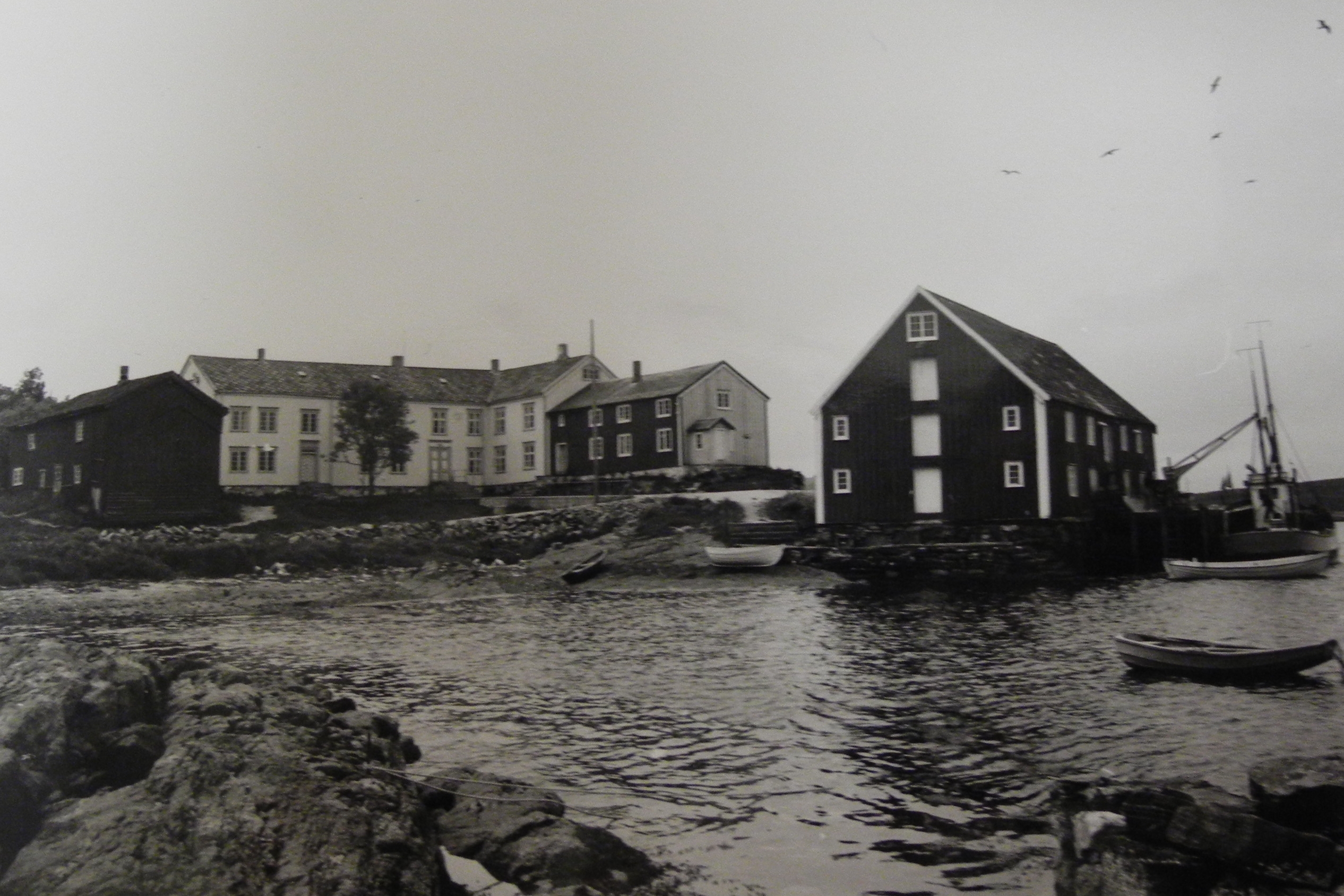
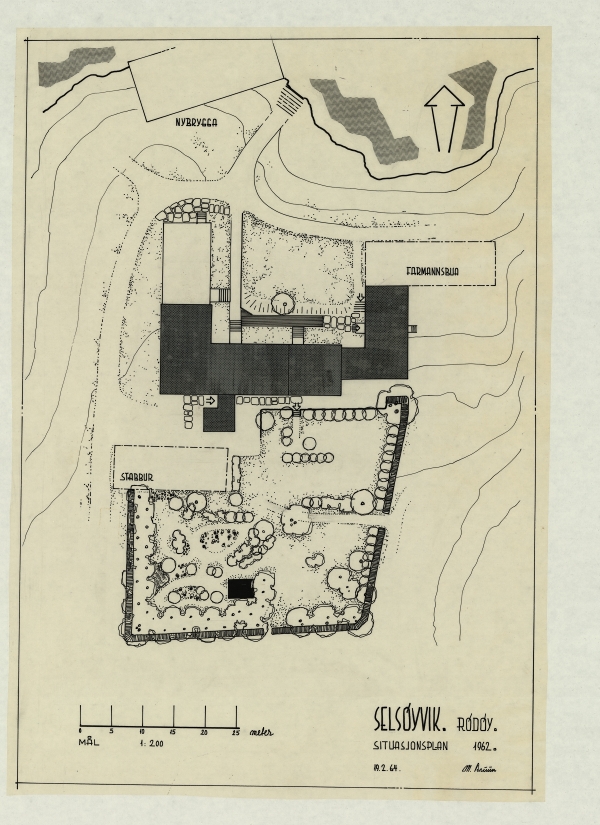
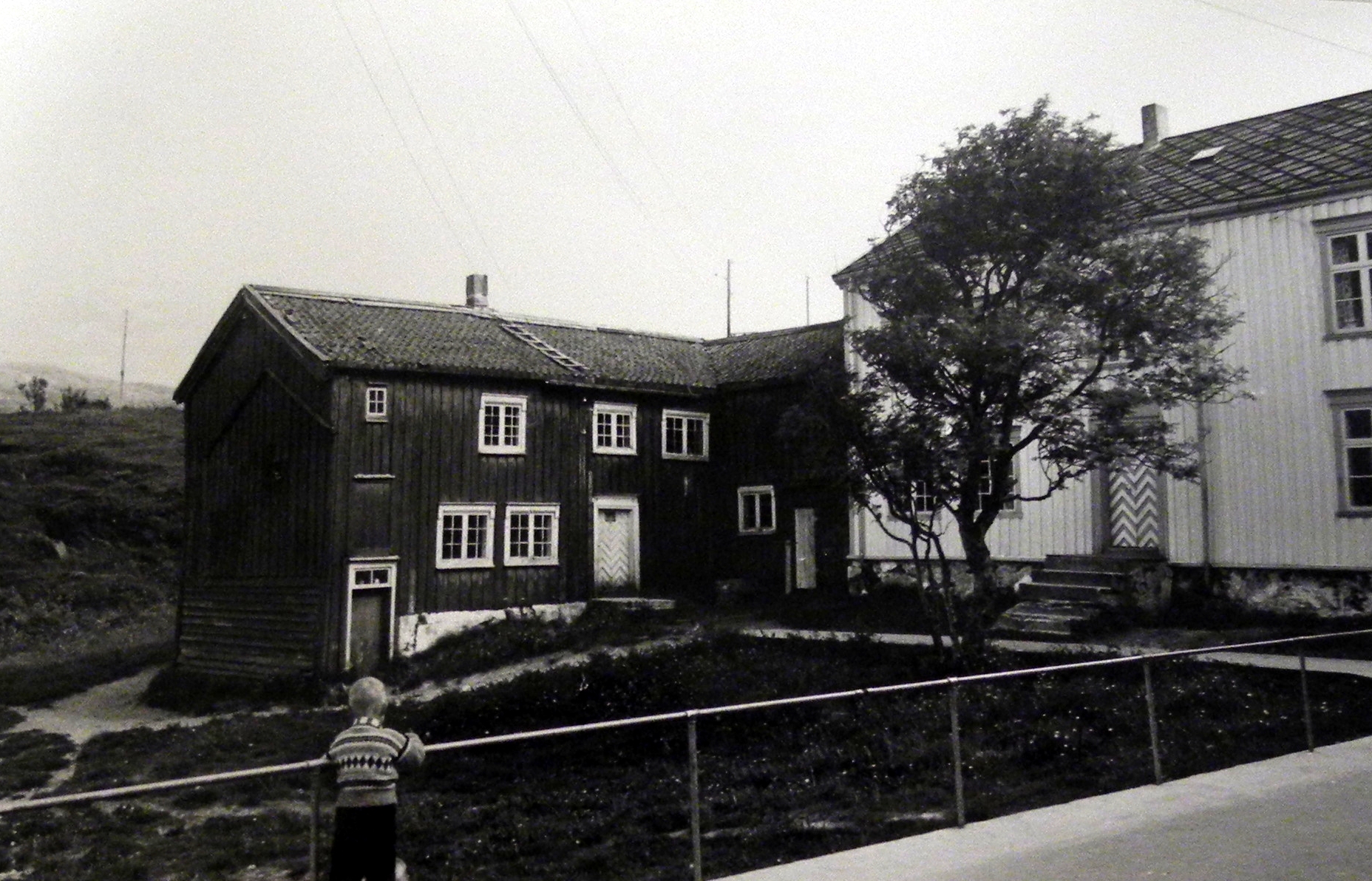
Trade station Selsøyvik 1962. Historical Archive for Norwegian Landscape Architecture.
In addition, the collection has a particular focus on vicarages (prestegårder). Vicars and their families played an important role in spreading garden culture and garden art in the region, particularly to remote areas. Here for instance, we can find information about the vicarage in Hadsel that used to be famous for its Auricula collection. Another interesting example is the vicarage in Steigen in Nordland. The vicar Johan Carl Richard Wisløff (1831-1893) and his wife Amalie moved to the place in 1871. With the help of Frederik Christian Schübeler (1815-1892), professor in botany and director of the botanical garden Tøyen (Kristiania, current Oslo), they planted more than 500 trees and shrubs in the garden, in addition to perennials and summer flowers. The garden in Steigen became an experimental field for trying for the region exotic plants such as hazel (Corylus avellana) and oak (Quercus robur). Wisløff reported back to Schübeler in Kristiania which plants survived the challenging conditions in the North. After some years, Steigen was known as “The Northernmost garden in the world”. The garden was seen as a model for the region, showing which species could thrive in this harsh climate. One can find several descriptions about the garden made by visitors and experts from the 19th and 20th centuries, including the agronomist for Nordland (amtsagronom) Olav Soldal (1847-?), and the State gardener Peter Nøvik (1844-1915) (Mørkved 2015).
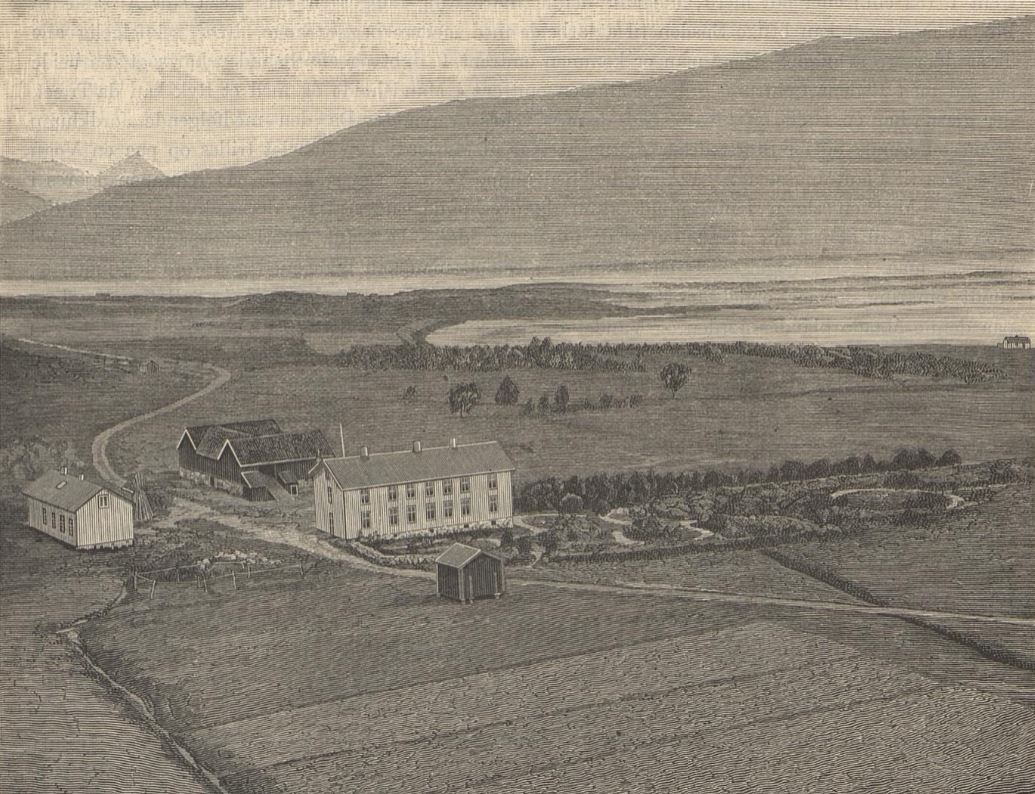
Steigen vicarage, end of 19th century (Lokalhistoriewiki.no).

Trade stations and vicarages located on map.
Landscape architecture in the North (1940s-1960s)
The collection of Historical Parks and Gardens focuses on protected sites or gardens recognized for their cultural values back in the 1960s. Other large collections in the Archive contain design projects laid out in Northern Norway. In the collection of Olav Moen (1887-1951) for instance, a proposal for the city Harstad in Nordland can be found. The plan dates back to 1947. A new church, sports fields and playgrounds are arranged in a new public park. Unlike Moen´s other works, this park design shows no attempt of an overall composition. It was also one of Moen´s last projects on larger public parks (Blichner 1989).
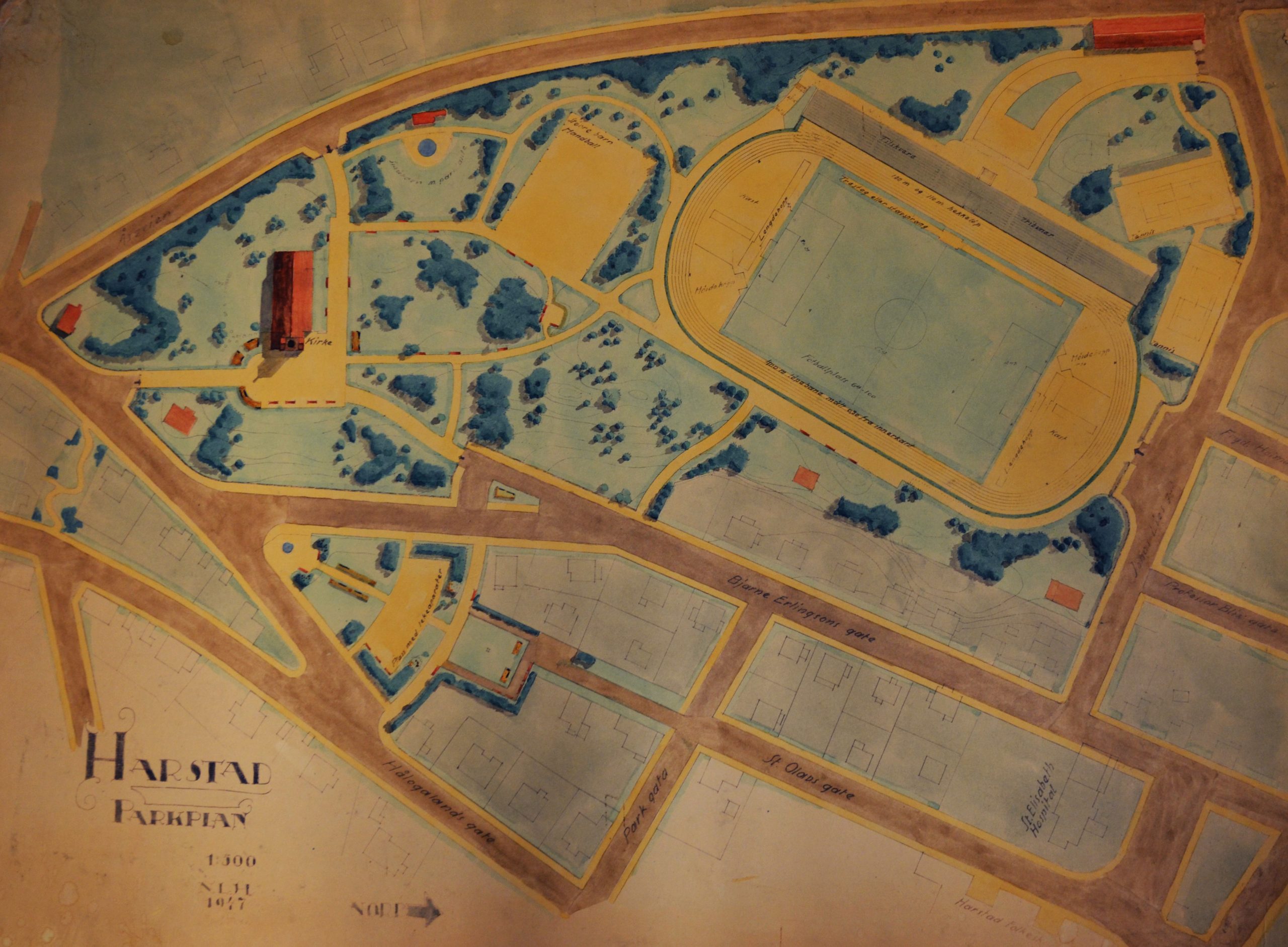 Harstad park 1947. Olav Moen.
Harstad park 1947. Olav Moen.
Harstad park was partially realized. The church was completed first in 1958 in a slightly different form. Some of the main elements can still be found in Harstad today.
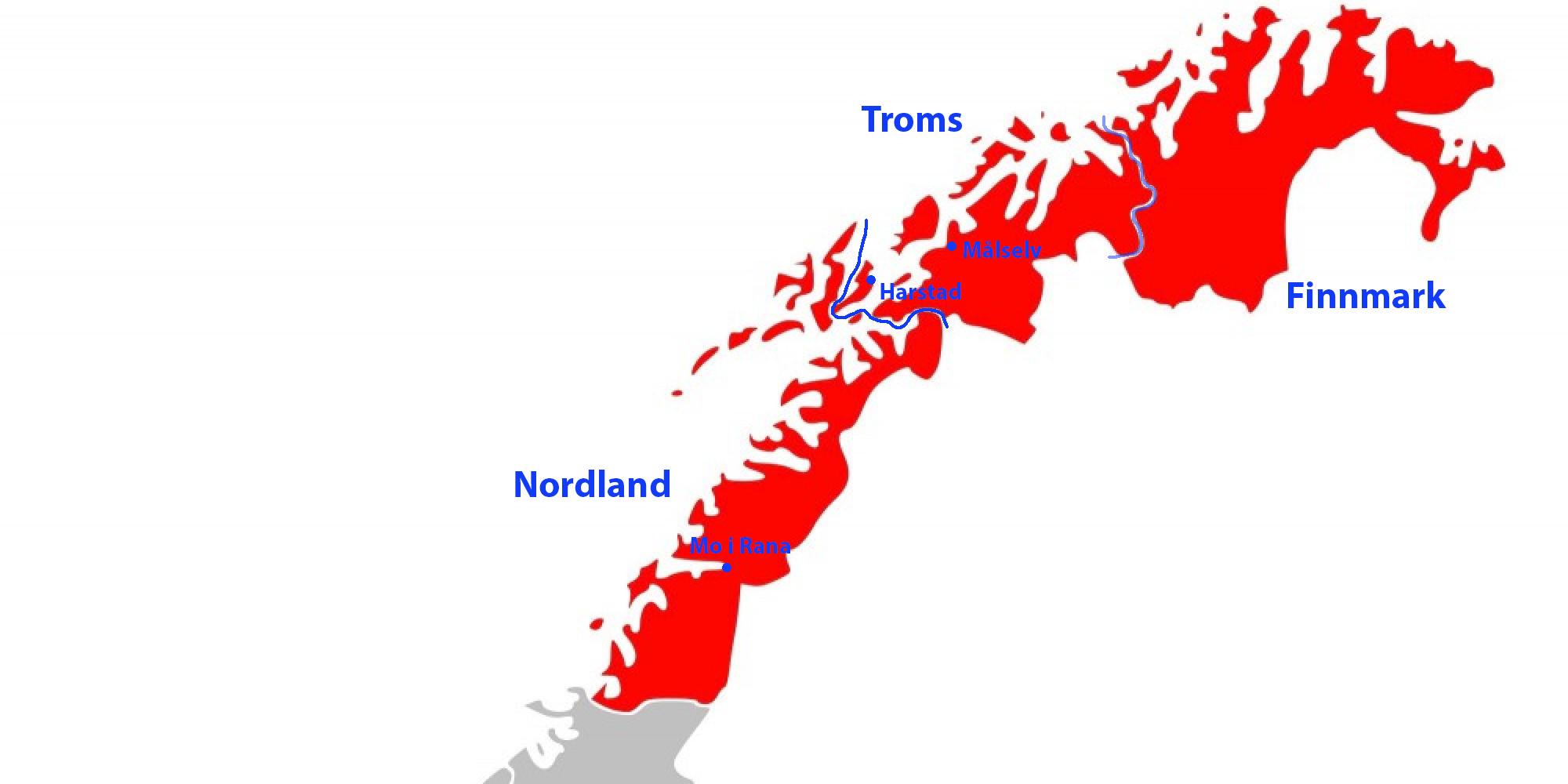
Projects of Olav Moen and Eyvind Strøm located on the map.
In the collection Eyvind Strøm (1899-1988), a few projects are located in Northern Norway. In 1946 in Mo i Rana, Nordland county, Strøm made a masterplan for the newly established housing area for the mining industry A/S Norsk Jernverk, a state-owned company by the Norwegian parliament (Stortinget). In 1950, Strøm delivered drafts for the outdoor area of the new so-called “star blocks” and additional town houses. He also offered detailed plans for single gardens. In 1980, he made drafts for the outdoor areas of the Red cross camp Haraldvollen in Målselv. In 1982, he also designed the outdoor area for the hospital Målselv, Troms county.
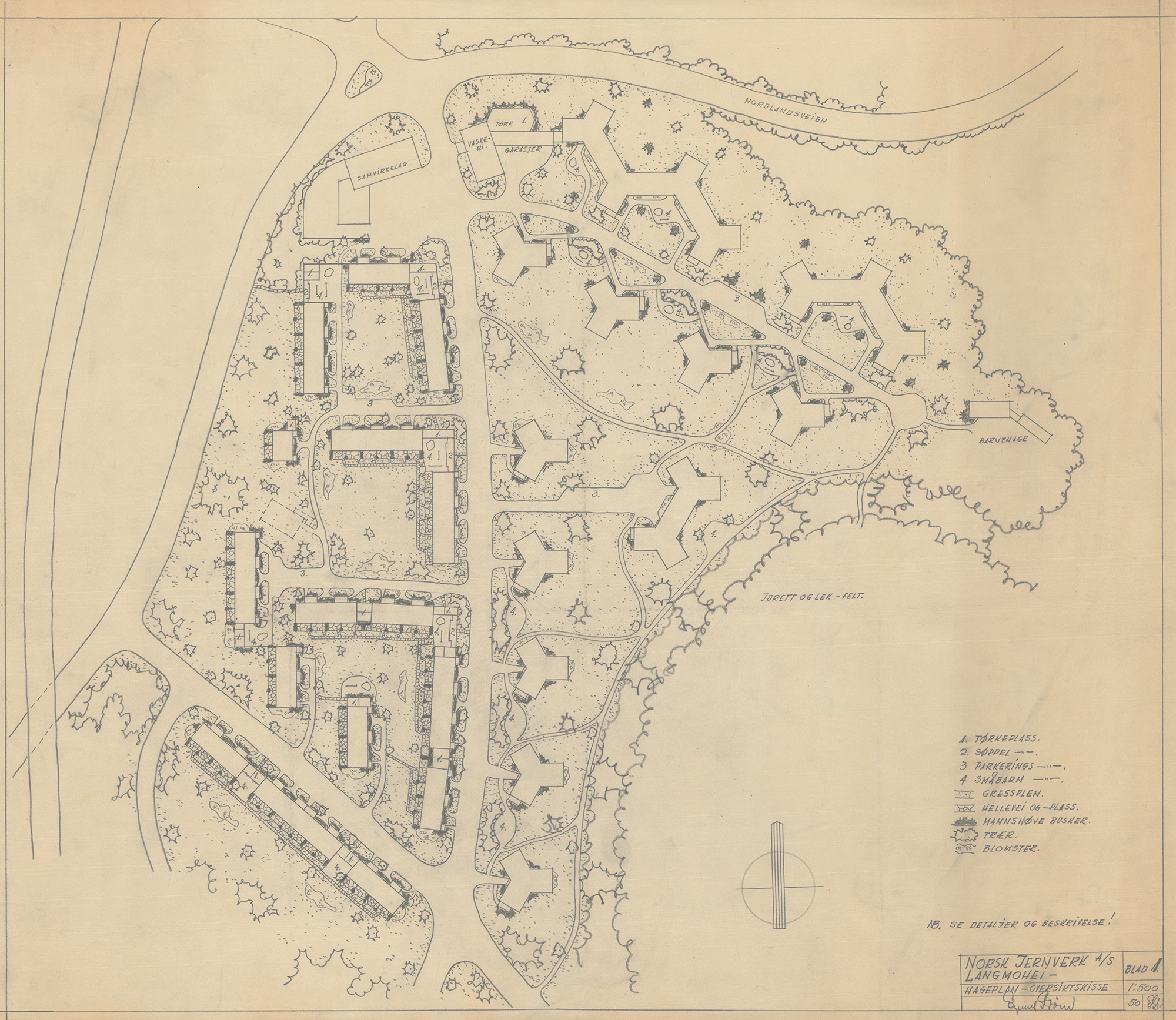
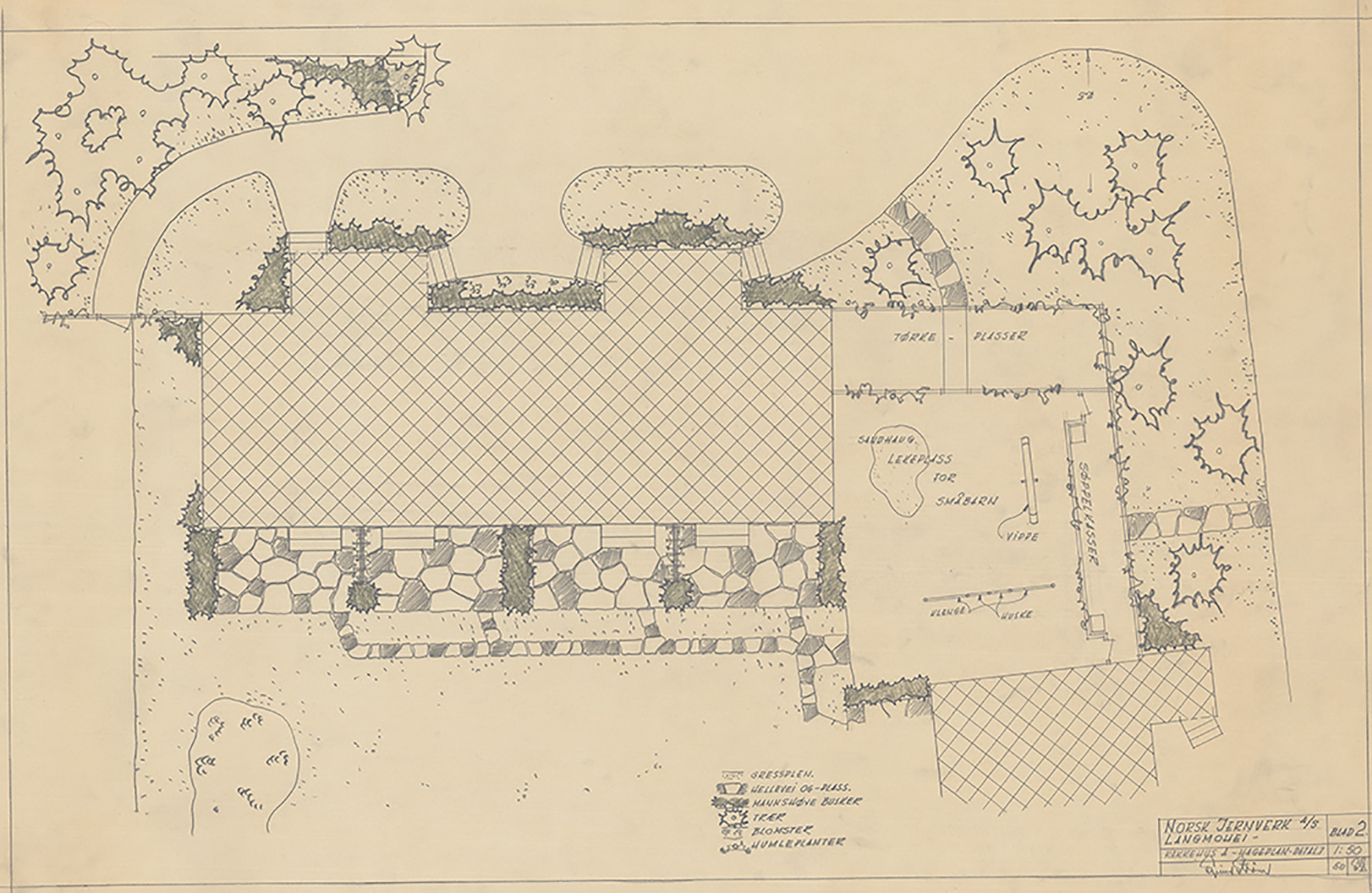 Langmohei in Mo i Rana 1950. Plan for the “star blocks”. Eyvind Strøm.
Langmohei in Mo i Rana 1950. Plan for the “star blocks”. Eyvind Strøm.
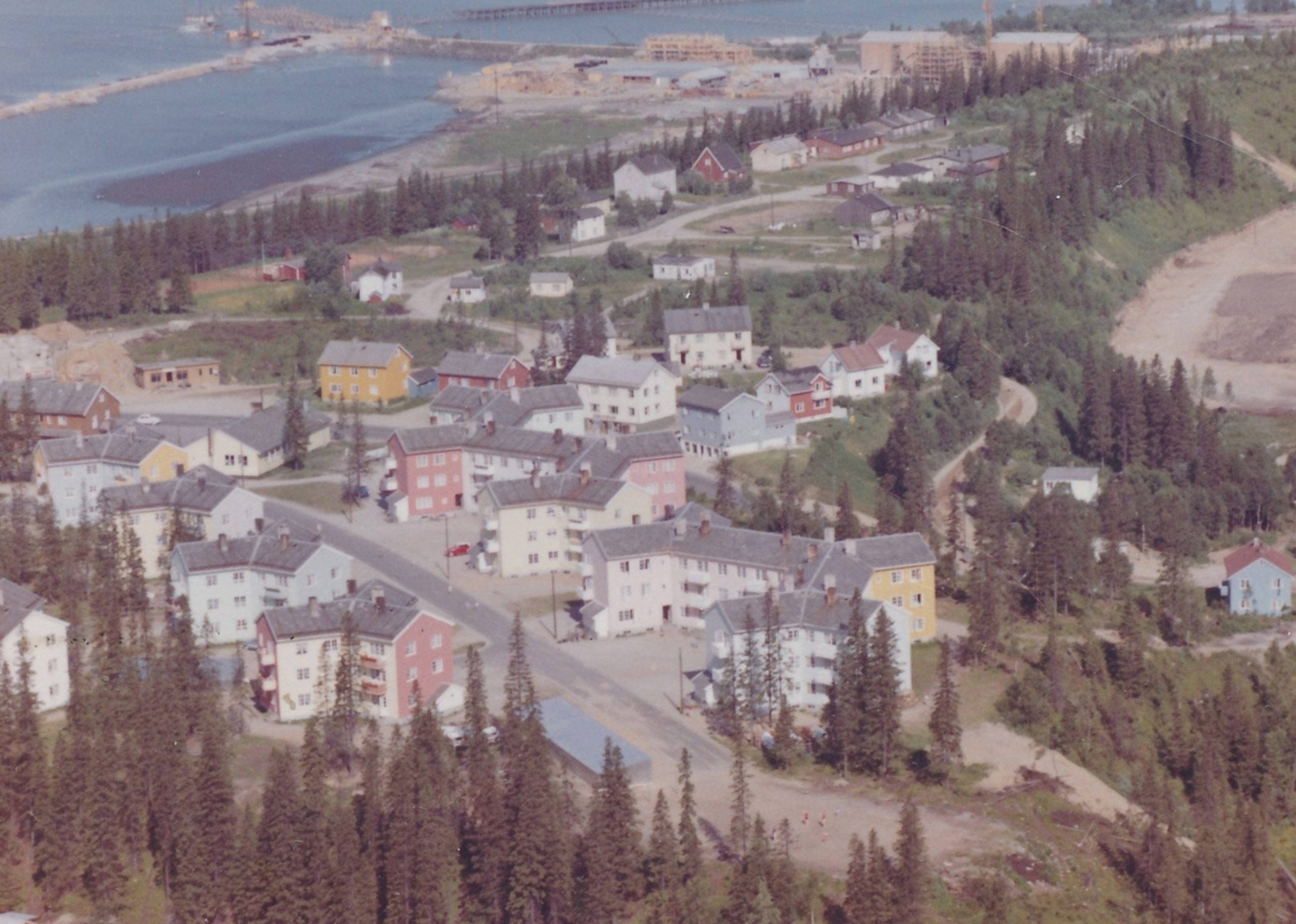 Star blocks in 1962. Helgeland Museum.
Star blocks in 1962. Helgeland Museum.
In the collection of Karen Reistad (1900-1994), there are also interesting projects from the northernmost regions of Norway. When she was a state cemetery consultant (Statens kirkegårdskonsulent), Reistad worked with cemeteries and graveyards in the whole country. She was responsible for the war cemeteries in the North after 1945, for instance Botn in Saltdal and Tjøtta, both in Nordland county. Botn includes both Yugoslavian and German war cemeteries established between 1953 and 1961. Reistad designed the Yugoslavian cemetery and gave advice for the German cemetery (Dietze-Schirdewahn/Lunde 2019). Reistad’s most important project in the North was the Soviet and the international war cemetery at Tjøtta, established between 1953 and 1970.
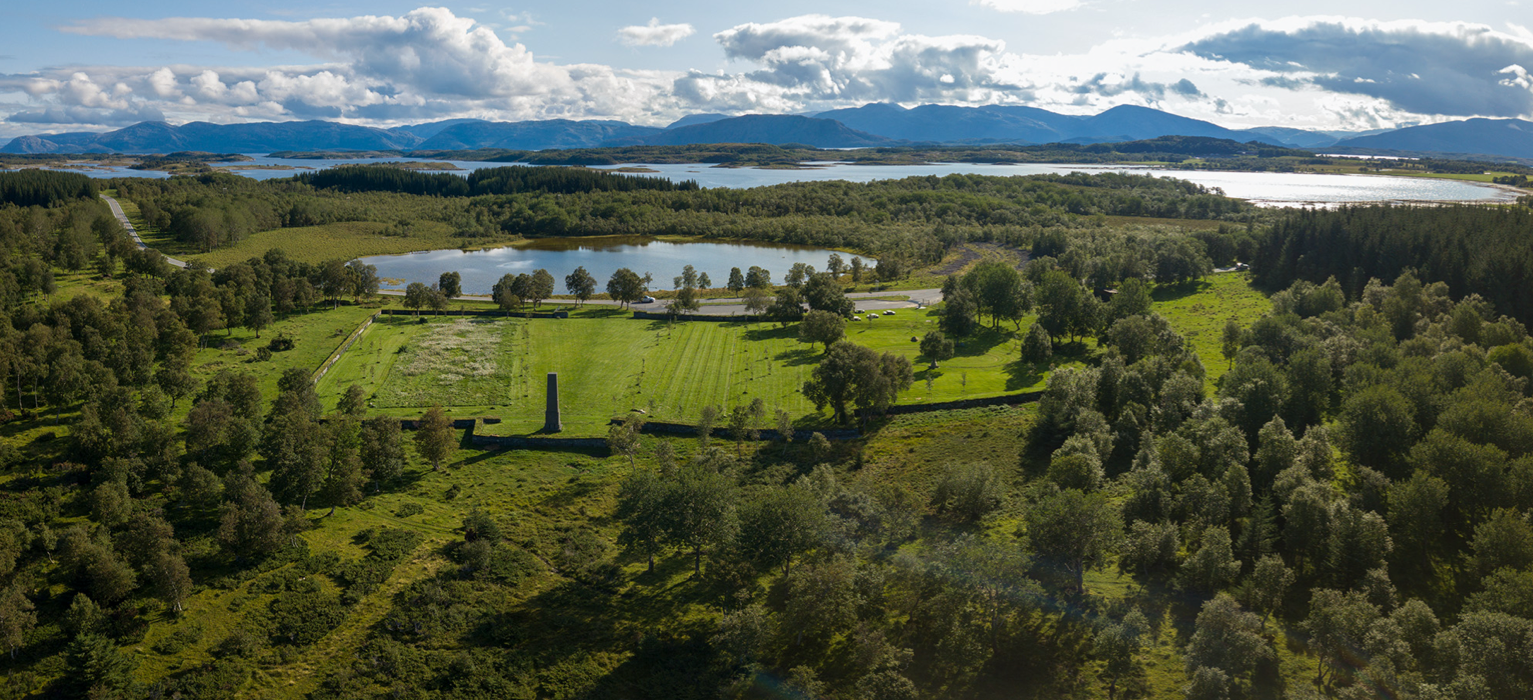 War cemetery Tjøtta 2019. Annar Bjørgli. National museum Norway.
War cemetery Tjøtta 2019. Annar Bjørgli. National museum Norway.
Typical for her design is the simple and dignified manner, in which she places the grave in focus while showing profound respect for the distinctive nature of the place (Jørgensen 2019).
Reistad worked also with other projects in the North. In her collection we can find plans for Fossheim Statsinternat in Sør-Varanger Municipality and Fjortun skole og Statsinternat in Hammerfest Municipality, both from 1966 and located in Troms-and-Finnmark county. The history of these boarding schools goes back to the 19th century and reflects a challenging part of Norwegian educational history. These schools were established to teach the children of the Northern minority groups, Sami and Kven, Norwegian language and Norwegian culture. Their own traditions and languages were not mentioned, and were even suppressed.
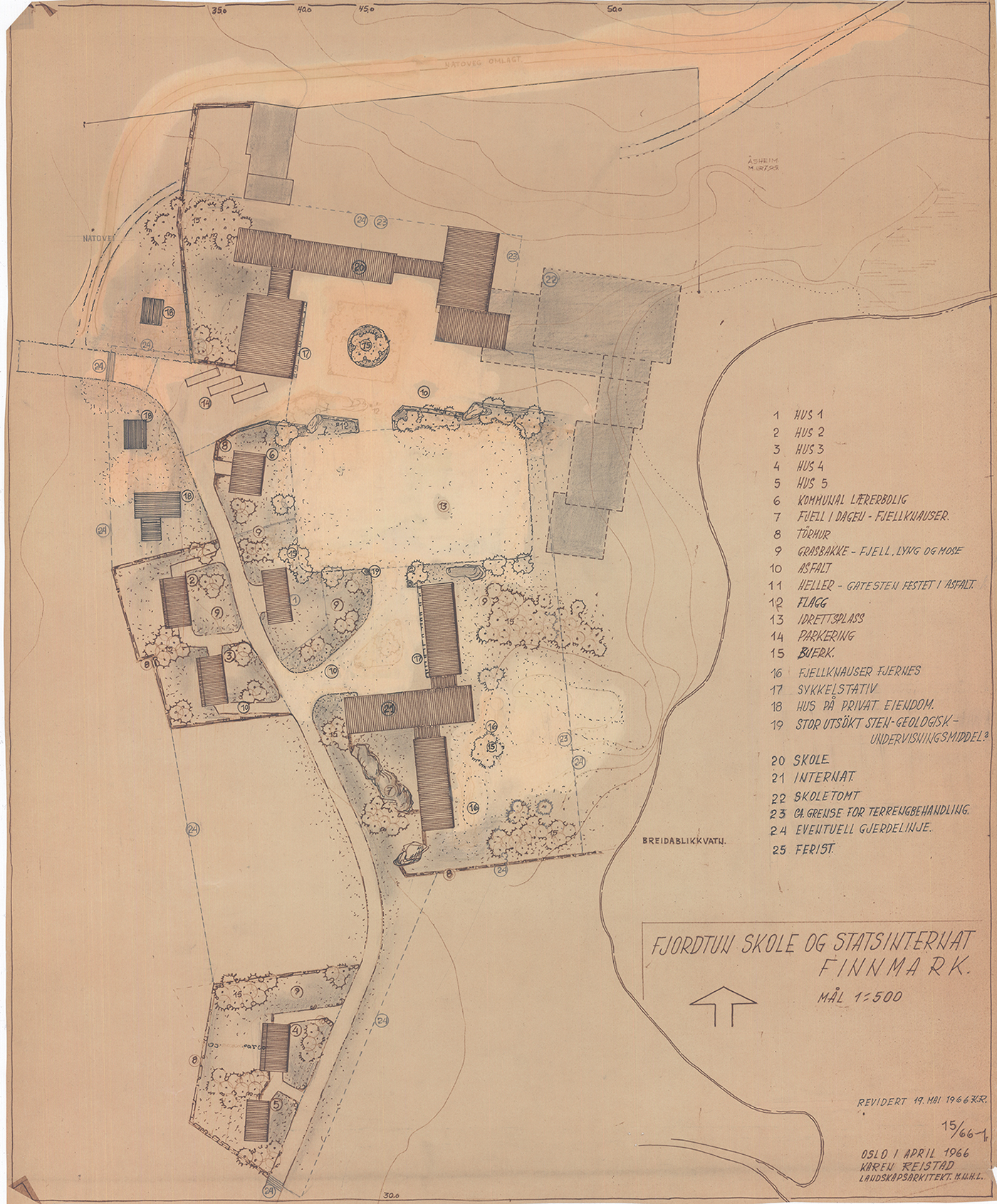 Proposal for Fjortun skole in Finnmark 1966. Karen Reistad.
Proposal for Fjortun skole in Finnmark 1966. Karen Reistad.
Reistad´s collection offers some useful reflections on plant use in the North both in relation to the cemeteries and other projects. In Finnmark, Reistad had close contact with the county gardener, Gunnar Vannes. They exchanged knowledge about “if it is possible to make something grow there at all” (letter from Reistad to Vannes in 1966). Vannes answers that the conditions in the area are challenging both in terms of climate and soil. But eventually they worked out the planting designs for the projects that Reistad was involved in. Co-authored with Nordland’s county garden architect Oddlaug Brunvoll (1914-1999) and the county gardener Henry Berg, Gunnar Vannes published Hagen i Nord (Gardens in the North) in 1979 (Brunvoll 1979). As the first book of such topic, it gives useful advice on how to establish a garden in the North, from soil preparation to plant use and layout, as well as the consideration of environmental issues. Oddlaug Brunvoll was also an important figure on garden architecture in the North. She finished garden architecture studies in 1949 at NLH (current NMBU) and worked as the county garden architect in Nordland from 1954.
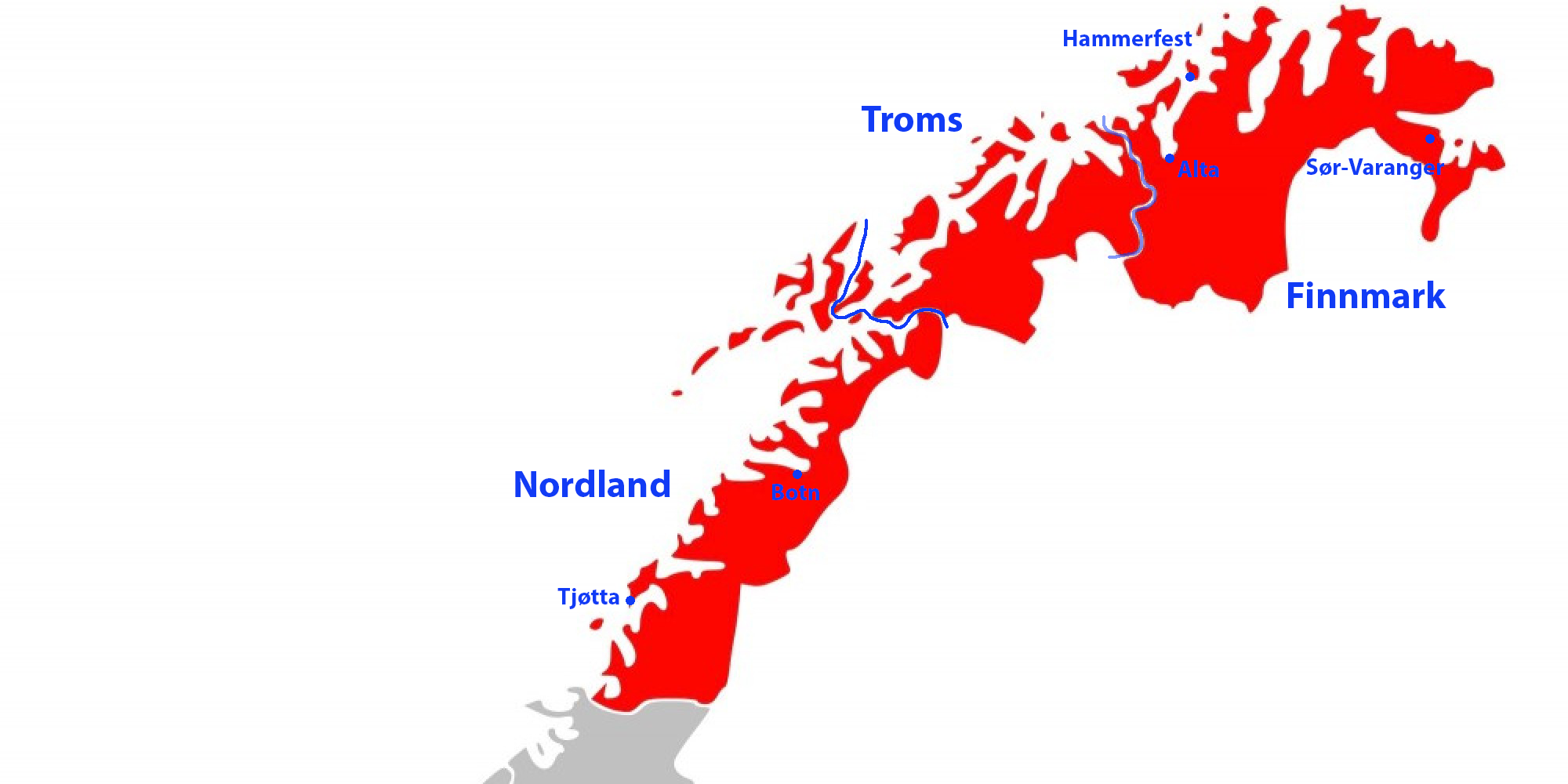
Projects of Karen Reistad located on the map.
In the collection Grindaker & Gabrielsen one finds only a few projects from the far North. There is a proposal for a new hospital in Tromsø in 1963 (not realized) and a competition entry for a new cemetery in Mo i Rana from 1957. However, in the collection of teaching materials from the Department of Landscape Architecture we can find notes and manuscripts made by Egil Gabrielsen. He was employed as a docent and later professor in the Department of Landscape Architecture from 1965 until 1998. In his note “Space in winter” (Rom om vinteren) from 1970, he reflects on different ways of using outdoor spaces in the 6 months’ dark period, particularly in Northern Norway. Gabrielsen points out that we use far too much effects that require summer conditions. It is difficult to design situations that have effects in different seasons. According to Gabrielsen, the winter season has its own distinctiveness in relation to“air, fog, dust, light, temperature, sound and wind”. The winter´s colour is grey, which gives the space a certain character and creates a demand for contrast and variety. The other element of the winter—snow—has a strong effect through its material and its changeability. Snow is useful since it collects dirt and dust, which again has a strong impact on the space. Gabrielsen strongly recommends a new focus on vegetation especially in relation to the winter landscape. Vegetation is an element that more than anything else appears in a natural context and mirrors changes of seasons. However, the forces of nature also set their limits and might challenge our designs for outdoor spaces in the North. Therefore, Gabrielsen advocates a new thinking for the tidiness of public green spaces, especially in relation to vegetation. The harsh climate and long dark time in the Northern regions need a different consideration of the elements such as air, fog, rain, snow, dust, light, temperature, sound and wind, he says (Gabrielsen 1970).
Broaden the context – landscape planning in the North (1960s)
While Grindaker & Gabrielsen had a focus on landscape architecture, the collection of Toralf Lønrusten is about landscape planning in a larger context and in different scales. Lønrusten and his landscape architect colleagues were heavily involved in the building of hydroelectric power stations in Norway since the 1960s. They worked in all counties in the North. In Lønrusten’s collection we again come across the topic of Sami in addition to the interests of environmental protection. Large-scale hydropower development in the North, especially in relation to the Alta-case, led to a reform of Norwegian Sami politics in the 1980s. Besides, since 1960s the projects also generated comprehensive debates about Norwegian hydropower stations and legal protection of natural values and recreational uses. Another important landscape architect related to hydroelectric power stations is Knut Hillestad (Nilsen 2010). His collection can be found in the Archive of The Norwegian Water Resources and Energy Directorate (Norges vassdrags- og energi direktorat, or NVE).
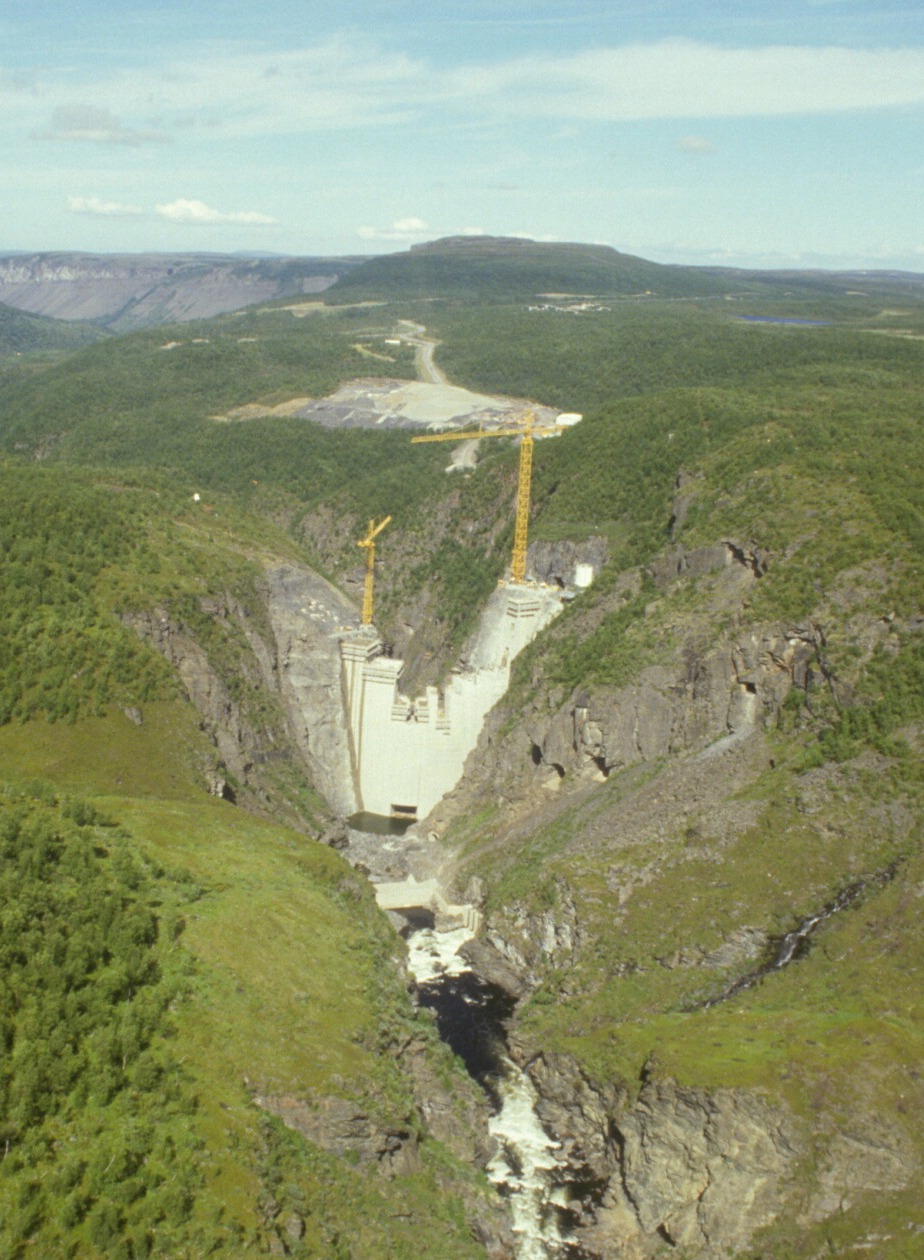
Alta dam under construction 1986. Knut Ove Hillestad/NVE.
Landscape planning and impact assessments became new tasks for the profession (and education) from the 1960s onwards. The archive mirrors this change and contains several projects and manuscripts about large scale projects in the North. In 1967, the Department made a land use plan for Øvre Valnesfjord between Bodø and Fauske, both in Nordland county. Leader of the work was Magne Bruun. The purpose of the plan was to secure Øvre Valnesfjord with its valuable distinctive natural environment, and to utilize rich opportunities the area offers for versatile outdoor activities all year round, which required the development of the service facilities in a functionally and qualitatively sound manner. The plan was also to ensure the traditional land use in the area, primarily grazing, forestry and agriculture.
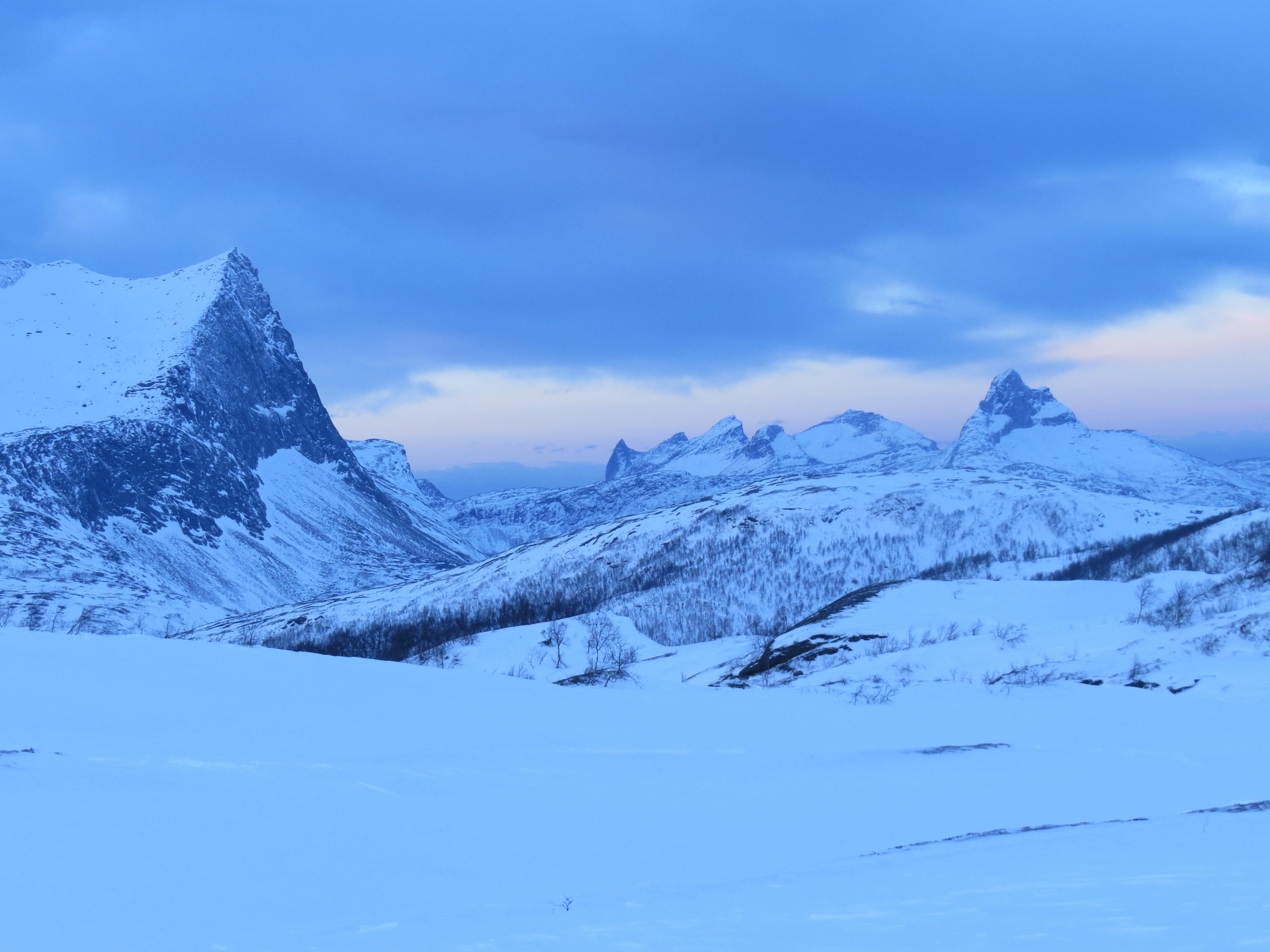 Sjunkhatten national park. Wikipedia.
Sjunkhatten national park. Wikipedia.
The planning methodology developed in the project was new and the project soon became a model for other northernmost coastal areas in Norway. Today, Øvre Valnesfjord is part of the national park Sjunkhatten established in 2010. It seems that the work in 1967 set the ground for the later consolidation of this protected landscape Sjunkhatten.
Student projects from 1950s until today
The Archive of Norwegian Landscape Architecture contains also an extensive collection of student works. Here one can find the first master thesis about Northern Norway from 1959, in which Magne Bruun registered plants relevant for garden culture in Nordland.
In 1980s, more student works shed light on the northernmost counties. For example, the first comprehensive studies about historical sites in Nordland county, Lenvik (current Senja) and Tromsø Municipalities in Troms were conducted by two master students in 1983, 1984 and 1987 (Wang Bjørsvik 1983 and 1984; Lunde 1987); and the first students’ onsite course/fieldtrip went to the village Sulitjelma in Fauske Municipality, Nordland in 1989. One can also find theses with a focus on Sami cultural heritage like the work of Kari Nilssen about the landscape of Ceavccageađge/Mortensnes in Finnmark county (Nilssen 1988).
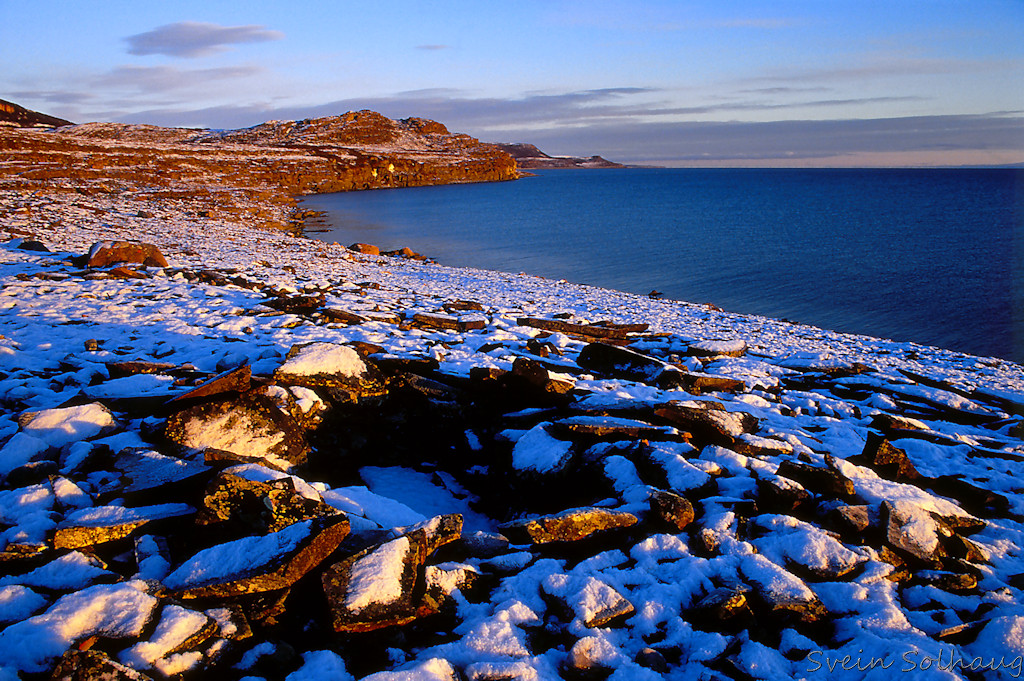
Ceavccageadge/Mortensnes in Finnmark county. Wikipedia.
Since 2000, several master-courses with focuses on land use and landscape planning (LAA360) , urban blue-green infrastructure (LAA340) and urban landscape as a social arena (LAA341) travelled regularly with student groups to the North. The places visited by the groups include some of the largest cities in the North, such as Tromsø (in 2010), Bodø, Narvik and Mo i Rana (in 2014), as well as smaller towns Sortland (2012) and Kirkenes (2009 and 2014), and the region Hattfjelldal along the Swedish border in the southeast of Nordland (2012). These visits generated several master’s theses in the following years under several themes. Some examples are listed at the end of this article. A recently finished PhD project by Thomas Haraldseid looks at creative processes in the meeting between nature-based tourism and place development, using case studies in Varanger, Vardø municipality in the county Troms-and-Finnmark. In 2021 the Department offers two continuing education courses “Integrated visitor management and community development” and “Management of green cultural heritage”, both with focus on and site visits to Nordland county.
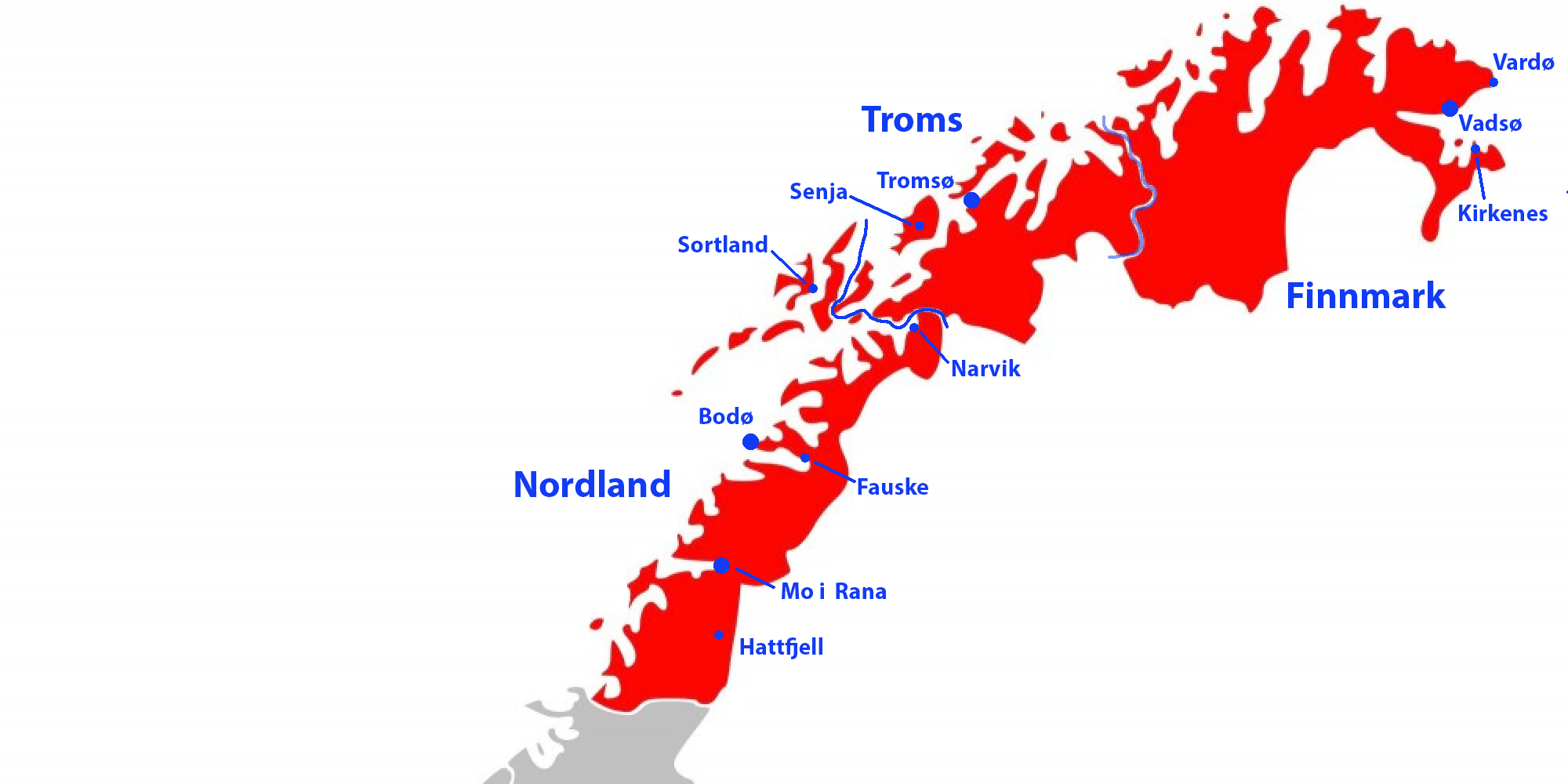
Student projects located on map.
This primary investigation of the Archive has shown that, since its foundation in 1919, the Department of Landscape Architecture at NMBU has been increasingly involving cases from the northernmost counties for both education and research. It started with a few design and survey studies by former professors and garden architects in the 1940s and 1950s, followed by a considerable involvement in hydropower station projects in the 1960s, and continued with student projects since 1980s. The focuses of such projects have also shifted from landscape design of individual sites to urban development and strategic landscape planning.
From today’s perspective a look at the archive material in relation to Northern regions in Norway is relevant and needed. Climate change and changing societies caused by migration, urbanization and economic transformation have a large impact on the northernmost counties. The archive opens a possibility to look back and to see how these communities have developed and have responded to some of the challenges. Landscape planning and landscape architecture played and still plays an important role in this context.
References:
B.C. Blichner: Olav Leif Moen (1887-1951) en landskapsarkitekt i brytningen mellom nyklassisisme og funksjonalisme. Hovedoppgave 1989. Institutt for Landskapsarkitektur, Norges Landbrukshøgskole.
O. Brunvoll: Hagen i Nord. Hageselskapets spesialbok for Nord-Norge. Gyldendal 1979.
A. Dietze-Schirdewahn, K.G. Lunde: Funkis på gravene. In: Osuldsen, Jenny: Utestemmer – Pionertid i Norsk Landskapsarkitektur 1900-1960. Orfeus 2019.
E. Gabrielsen: Rom om vinteren. Unpublished manuscript in the collection of teaching material 1970. Historical Archive of Norwegian Landscape Architecture.
K. Jørgensen: Karen Reistad. In: Osuldsen, Jenny: Utestemmer – Pionertid i Norsk Landskapsarkitektur 1900-1960. Orfeus 2019.
M. Lunde: Historiske hager i Troms. En analyse over registrerte hager i Lenvik og Tromsø kommune med restaureringsplan for prestegårdshagen Lenvik bygdemuseum. Hovedoppgave NLH Ås 1987.
B. Mørkved: Prestegården i nordnorsk hagekultur. In: I. Hage, E. Haugdal, S. Hegstad (ed.): Hager mot Nord. Orkana Akademisk 2015.
Y. Nilsen: Landskapsarkitekten Knut Ove Hillestads virksomhet ved NVE 1963-1990. NVE Rapport 21-2010.
K. Nilssen: Mortensnes – et historisk landskap i Finnmark. NLH 1988.
N. Wang Bjørsvik: Gamle hager i Nordland. Rapport fra en reise sommeren 1983. Prosjektoppgave NLH Ås 1983.
N. Wang Bjørsvik: Bevaring av historiske hager i Norge med restaureringsforslag for haven ved hovedgården Melbu i Vesterålen. Hovedoppgave NLH Ås 1984
Examples of current master theses (sorted by published year):
Pia Nic Gundersen: Menneskets forhold til omgivelsene – betydning av medvirkning i analyse- og utredningsmetodikk. UMB/NMBU 2013.
Linn Yli-Maunula Jørgensen: Ungdom og medvirkning i stedsutviklingsprosesser. Case fra Vadsø. UMB/NMBU 2013.
Linnea Kvinge Karlsen: War landscapes: Landscape as a memorial: Beisfjord: Development of the Beisfjord landscape in Nordland from prison camp to a memorial site. NMBU 2014.
Hildegunn Høistad Loraas: Urban and street space as a development strategy for an attractive and vibrant city center in Mosjøen. NMBU 2015.
Sigri Rosø. Harbor promenade as a constructive development strategy in Svolvær. NMBU 2015.
Ida Haug: Fra grått til blågrønt: forslag til ny utforming av Mack-kvartalet i Tromsø. NMBU 2016.
Anette Wisth: Tilbake til Sjøfronten, Bodø. NMBU 2016.
Carol Wong: Destination Tromsømarka: design of adapted, accessible and attractive destinations in the field. NMBU 2016.
Marianne Norum: From airport to urban landscape: principles for the development of a sustainable and vibrant district in Bodø. NMBU 2018.
Hanna Mayer Thuestad: Rom for de unge: en casestudie av Stormen bibliotek i Bodø. NMBU 2019.
Åse Holte: Landscape-adapted adaptation in vulnerable cultural landscapes on the outer side of Western Lofoten: possible synergies between agriculture and tourism. NMBU 2019.
Sigrid Bjorbekkmo: Et samfunn i motvind – offentlige rom og møteplasser tilpasset værharde kystlandskap. Case Andenes, Vesterålen. NMBU 2020.
